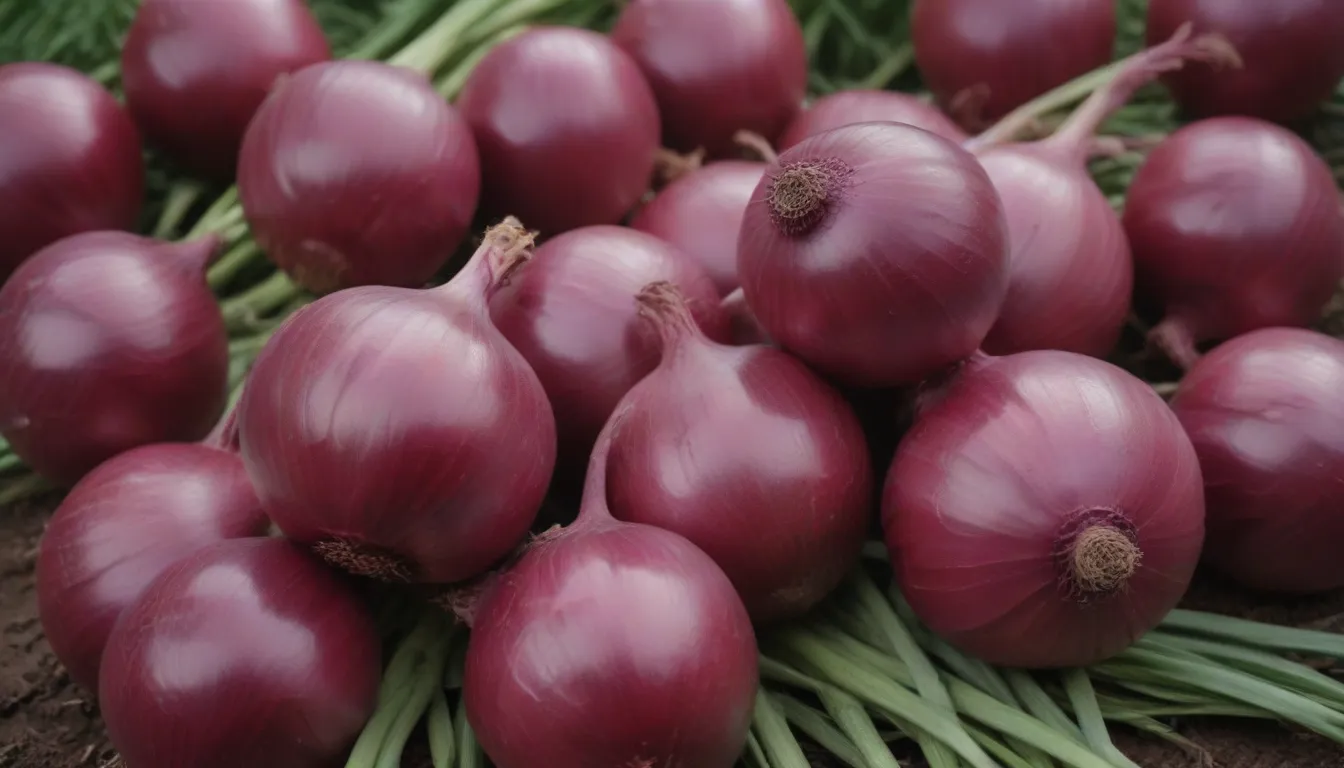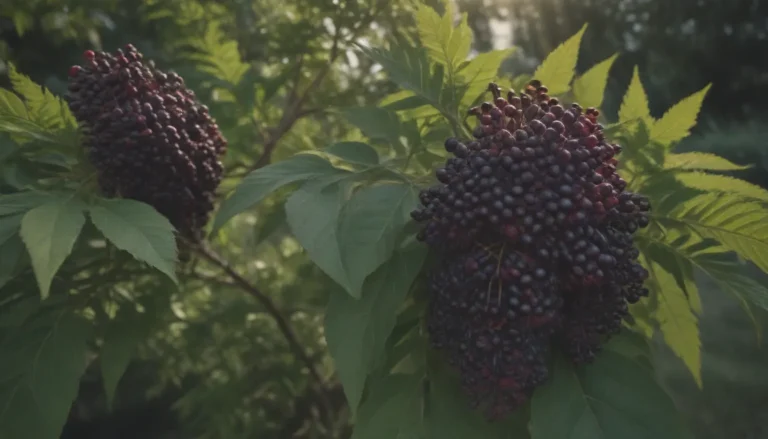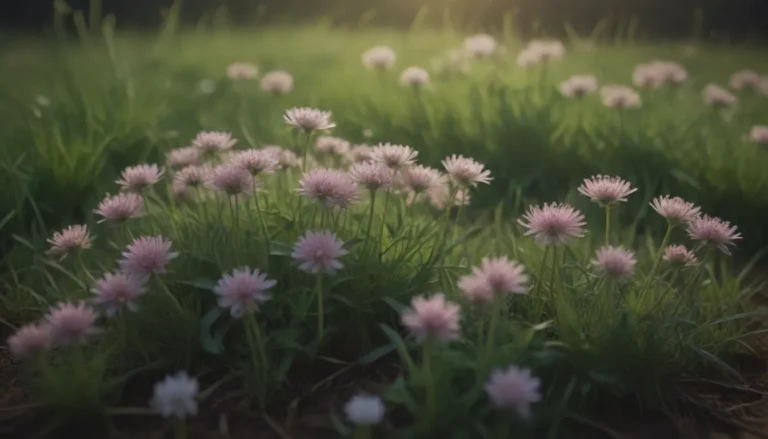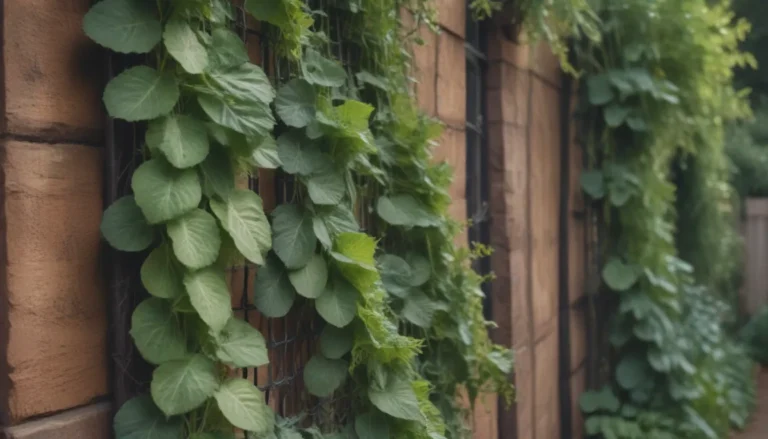How to Successfully Grow and Care for Red Onions in Your Garden

Are you looking to add some vibrant color and delicious flavor to your garden? Red onions are a fantastic choice! These biennial bulbs are not only easy to grow but also a versatile addition to your garden harvest. In this comprehensive guide, we will explore everything you need to know to successfully cultivate and care for red onions in your garden.
Getting Started with Red Onions
Before we dive into the nitty-gritty details of growing red onions, let’s cover some basics to get you started on the right foot:
Quick Tips for Growing Red Onions:
- Plant red onions in a spot with full sun, receiving six to eight hours of sunlight daily.
- Ensure your red onions receive about an inch of rainfall or equivalent watering each week.
- Remember that red onion plants are toxic to pets, so exercise caution if you have furry friends around.
How to Plant Red Onions
While you can grow red onions from seed, this method can be a bit challenging due to damping off, a common issue with onion seedlings. An easier alternative is to start with transplants or sets, small onion bulbs seeded the previous year. When planting red onion sets, follow these guidelines:
- Plant sets one to two inches deep and two to six inches apart in rows 12 to 18 inches apart.
- Consider planting them closer together if you plan to harvest young plants as green onions.
- Space transplants about four inches apart in rows 12 to 18 inches apart.
Ensuring Proper Care for Your Red Onions
Now that your red onions are in the ground, it’s essential to provide them with the care they need to thrive. Let’s break down the key care requirements for your red onion plants:
Light:
- Red onions require at least six to eight hours of full sun daily to grow well.
Soil:
- Ensure your soil is loose, well-drained, and rich in organic matter.
- Ideally, the soil pH should be between 6.0 and 7.0 for optimum growth.
Water:
- Red onions need at least an inch of water each week, either from rainfall or manual watering.
- Adjust the frequency based on weather conditions, watering more often in hot, dry conditions.
Temperature and Humidity:
- Red onions prefer temperatures between 55 and 75 degrees F. and can tolerate light frost.
- Protect plants from hard freezes below 20 degrees F. with mulch or row covers.
Fertilizer:
- Start with organic compost in the planting site and continue with nitrogen-rich organic fertilizer every two weeks after planting.
- Stop fertilizing when bulbs begin pushing against the soil surface.
Pollination:
- Red onions rely on beneficial insects for pollination.
- Keep in mind that onions typically don’t flower until their second year of growth.
Different Varieties and Types of Red Onions
Red onions come in various varieties, including heirlooms, cultivars, and hybrids, categorized based on day length. Understanding the different types of red onions can help you choose the best variety for your garden.
- Short-day onions: suited for southern regions with shorter day lengths.
- Day-neutral onions: versatile varieties that adapt to various day lengths.
- Long-day onions: thrive in northern regions with longer day lengths.
Harvesting and Storing Your Red Onions
Knowing when and how to harvest red onions is crucial to ensure a bountiful yield. Here are some tips to guide you through the harvesting process:
- Stop watering red onions when the tops begin to fall over.
- Allow the stems to dry out, indicating that the onions are ready for harvest.
- Carefully lift the bulbs from the soil and cure them in a warm, dry location.
Growing Red Onions in Containers
If you’re short on garden space or facing soil or sunlight challenges, growing red onions in containers can be a great alternative. Follow these steps to successfully grow red onions in pots:
- Choose a container with drainage holes at least 12 inches deep and 8 inches wide.
- Plant red onion sets in a mix of potting soil and compost, ensuring adequate drainage.
- Water your container-grown red onions more frequently, as pots tend to dry out faster.
Propagating and Overwintering Red Onions
Propagating red onions can be a rewarding experience, allowing you to grow your own onion sets from seed for future plantings. Additionally, overwintering red onions can provide early crops in the spring. Follow these tips for successful propagation and overwintering:
- Plant red onions from seed or sets in the fall for overwintering until the following spring.
- Mulch or protect plants in colder climates to insulate them from frost damage.
Common Pests and Diseases to Watch Out For
While red onions are relatively low-maintenance plants, they can still fall victim to common pests and diseases. Be on the lookout for issues such as rot, leaf miner infestations, and damping off. Prompt action can help you address these problems before they impact your crop.
In conclusion, growing and caring for red onions in your garden can be a rewarding experience, offering flavorful additions to your culinary creations. By following the guidelines outlined in this comprehensive guide, you can cultivate a successful crop of vibrant red onions to enjoy fresh or store for later use in your favorite dishes. Happy gardening!





